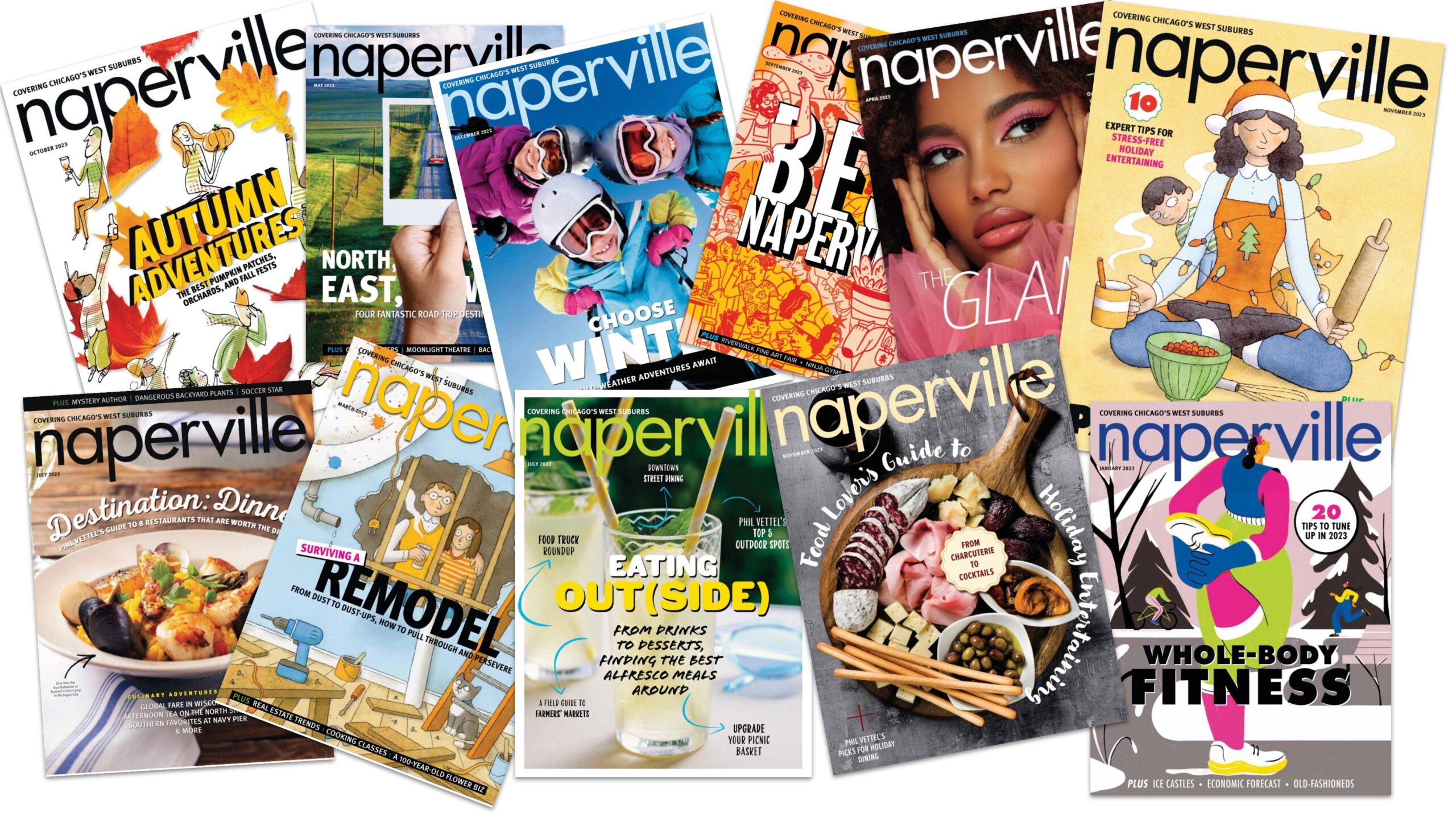Property Druthers
By Mark Loehrke
March 2022 View more Featured
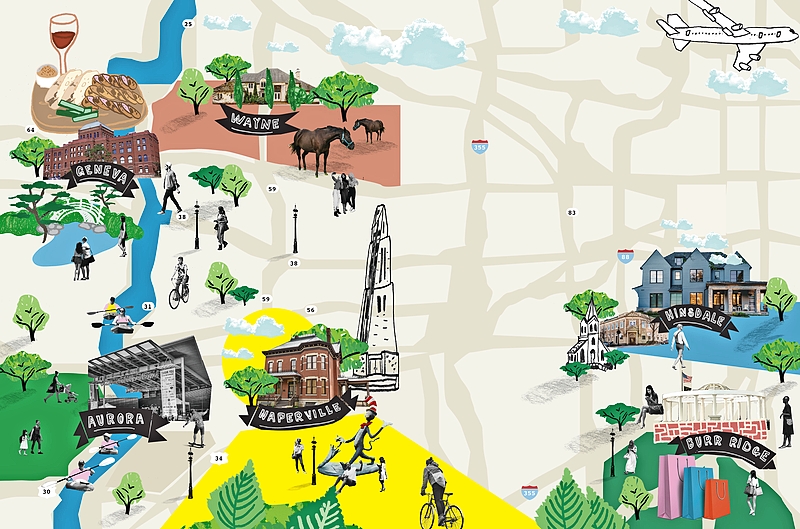
By Mark Loehrke
Illustrations by Tanya Cooper
If real estate is traditionally one of the most popular topics of suburban conversation, then the past two years have really given folks in the western burbs something to talk about. From bringing the office into the home to putting a newfound premium on both indoor and outdoor space—as we spent more time on our own little plots—the pandemic forced dramatic and widespread changes to how many of us live.
The housing markets in several ZIP codes saw either impressive reversals from years of decline or ridiculous boosts to already-hot sales. Buyers found themselves in cutthroat competition for every new listing, open houses were canceled before they ever welcomed a single walk-through, and “Under Contract” cappers were being affixed to “For Sale” signs practically as soon as they were being planted.
Here’s where things stand—and where they may be headed—in six diverse cities and towns throughout the western suburbs.
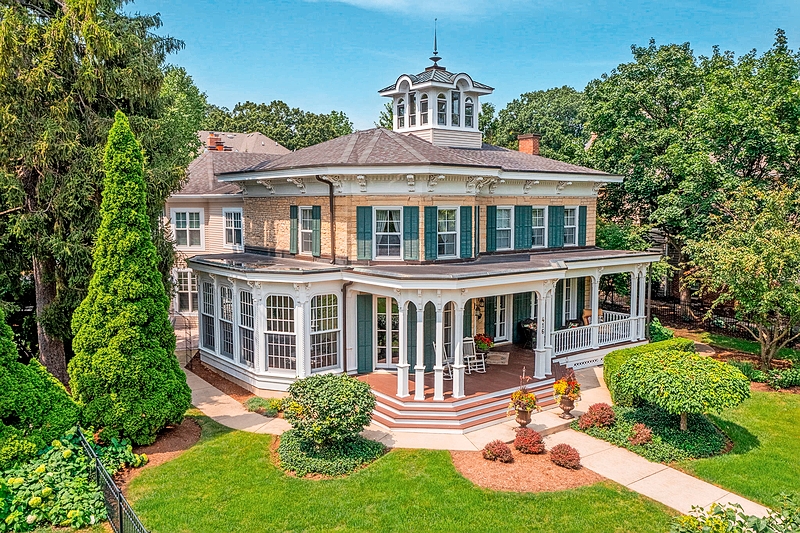
416 South First Street $1,150,000
Geneva
Where history meets progress (and parks … lots of parks)
It should probably come as little surprise that Geneva ranked No. 4 in the country in a recent StorageCafe analysis of the best suburbs for city-like living (based on amenity-related data such as retail stores and restaurants per 1,000 residents: 6.2 and 3.1, respectively). The town has a long-held reputation for having one of the most lively and appealing suburban downtowns in the Chicago area. In fact, Baird & Warner broker Kelly Crowe, a Geneva resident who has worked in the town for more than two decades, says the city’s combination of historic charm and modern feel is one of the primary draws of this middle sibling of the Tri-Cities along the Fox River.
“People just love all of the unique shops and restaurants in downtown Geneva,” Crowe says. “The town has really done a good job or preserving its rich history while drawing the kind of new businesses that keep the sidewalks packed and lively.”
Thanks to the draw of that urban vibe, Crowe says many buyers seek out properties within walking distance of the downtown area (as well as the Metra train station), where most of the stock is older homes that tend to go for $600,000 and (way) up. For those willing to live farther from the heartbeat of downtown, several subdivisions to the west, including Mill Creek, offer more affordable options and help spread out the town’s roughly 22,000 residents, resulting in low population density. Crowe says downtown and the areas beyond both enjoyed a strong housing market in 2021, which she fully expects to continue into 2022.
Of course, there’s more to Geneva than just its jewel of a downtown. The same StorageCafe report notes that the town boasts over 2,218 square feet of park space per capita in the town—more than five times the national suburban average. Because what’s a city without its parks?
LOCAL LANDMARKS
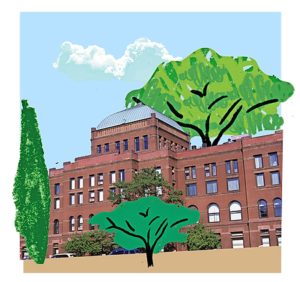
Old Kane County Courthouse
It’s hard to pick a standout when much of your downtown area is filled with historically notable buildings, but even if this imposing circa-1892 structure no longer serves its original purpose (court matters moved to the Kane County Judicial Center in St. Charles in 1993), it nevertheless remains an architecturally impressive anchor for the Third Street corridor.
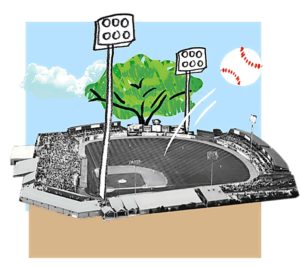
Northwestern Medicine Field
The Kane County Cougars have been delivering the small-town charm and pure summertime joy of minor league baseball to the Tri-Cites from their quaint 10,000-seat home park on Geneva’s east side since 1991.


Source for all price data: Midwest Real Estate Data
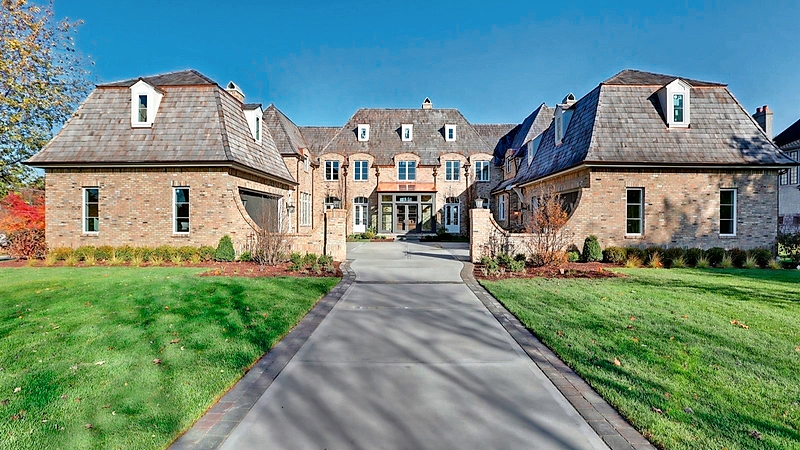
15W170 60th Street $3,550,000
BURR RIDGE
The major draw: Proximity to the big city
Another western suburb to rank highly on StorageCafe’s list of the country’s best suburbs for city-like living, Burr Ridge came in two spots behind Geneva at No. 6. And while that slightly lower ranking is likely due in part to the presence of fewer retail stores and restaurants per 1,000 residents (3.8 and 1.9, respectively, versus 6.2 and 3.1 in Geneva) Burr Ridge bests its Tri-Cities counterpart in both housing affordability and population density—not to mention being much closer to Chicago (just 15 miles away).
One of the wealthiest communities in the country, with a median household income near $160,000, Burr Ridge has a housing market that reflects its decidedly upscale air. And just as in many of its neighboring suburbs, 2021 turned the tide of several years of decreasing home price with a jump of nearly 20 percent, according to StorageCafe’s analysis.
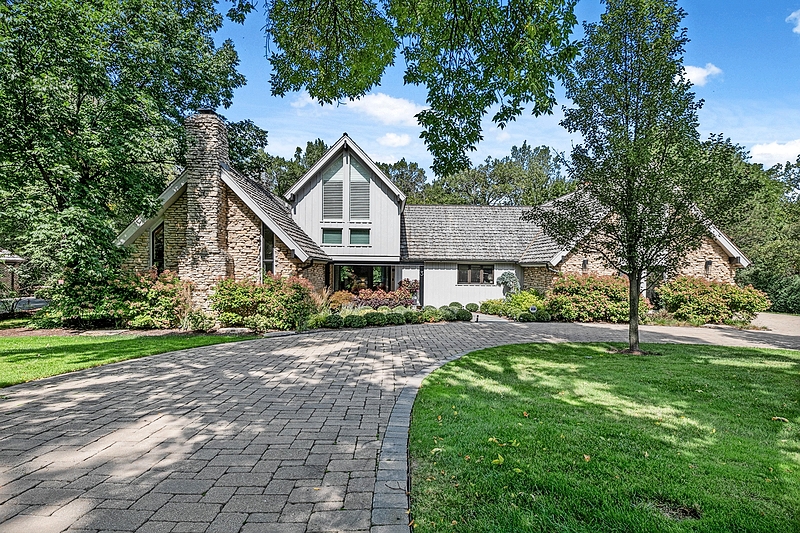
3 Woodgate Dr. $1,800,000
“Houses that sat on the market for several years were sold largely last summer,” University of Illinois at Chicago professor Kheir Al-Kodmany said in the report. “Taking advantage of the favorable climate, some homeowners remodeled their homes quickly and put them on the market asking for high prices—some were sold at unusual costs.”
While those buyers were getting large and well-appointed homes for their considerable dollars, one thing they won’t find in Burr Ridge is the traditional and/or historical downtown that many surrounding communities can claim. Lacking this draw, the village instead developed the 195,000-square-foot, mixed-use Burr Ridge Village Center back in 2007, giving residents and visitors something of a manufactured walkable downtown that features luxury rental units, office condos, upscale shopping, high-end dining, and a Kohler Waters spa.
LOCAL LANDMARKS
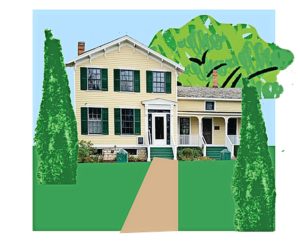
Vial House and Flagg Creek Historical Museum
Located on the property of the Pleasant Dale Park District, these buildings—the restored 1856 home of early settler Robert Vial and the colorfully decorated museum space—together serve as home base for the Flagg Creek Heritage Society.
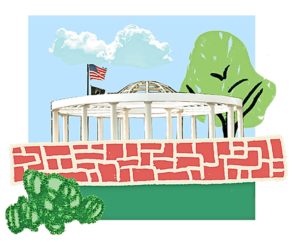
Burr Ridge Veterans Memorial
Few memorials in the western suburbs are nearly as well conceived and well executed as Burr Ridge’s solemn tribute to our nation’s veterans, which regularly hosts ceremonies and events.


Photos by Erin Konrath/Pineapple Labs

Neighborhoods include a mixture of historic, custom, and tract housing that surround a central downtown district, including Water Street, North Central College and Century Walk public art pieces.
NAPERVILLE
Despite changing tastes and shifting priorities among homebuyers throughout the years, the “elevator pitch” for Naperville has been remarkably consistent: a dynamic downtown, a convenient location, great schools, numerous parks, fantastic community events, and a thriving local economy. The city regularly rates among the top communities in the country in several of these areas—including No. 1 national rankings from Niche.com in 2021 for best city to raise a family in and the city with the best public schools—and maintains an award-winning public library system and diverse restaurant-and-retail scene as well. As a result of all of these factors and more, Naperville has seen a similarly consistent influx of new residents over the past several decades, growing to a recent population of almost 150,000.
One of the unique things about Naperville’s explosive growth over the last century is the manner in which that growth has unfolded. The core downtown historic district (still among the most desirable—and most expensive—areas in the city) is joined by dozens and dozens of subdivisions that have spread out in every direction, some with their own shopping areas.
In fact, a trip from the city’s northernmost areas around I-88 to its far south side near Plainfield is today a nearly 12-mile journey. Yet despite this geographic sprawl, the subdivision strategy of development has allowed neighborhoods—true communities with their own personalities—to develop around the local schools, pools, and parks, helping this growing city retain its small-town feel (and the largest recreational swim conference in the country).
Many of those who have sought out Naperville over the past two pandemic-affected years, in particular, have been buyers from Chicago. Looking to get out of a small urban condo, these families desire a detached single-family home with more interior space and a yard, according to local husband-and-wife Keller Williams Infinity real estate team Bruce and Tasha Miller. And these buyers have found a hot market.
“Both the prices and the number of homes sold were way up in Naperville in 2021,” Bruce says. “Despite the increase in the number of homes sold, however, there was very low available inventory at any given time because homes sold so quickly due to the high demand. Prepandemic, most buyers wanted an updated home with modern finishes, but lately the low inventory and high demand has caused updates to become somewhat less important.”
As far as how 2022 figures to shake out, the Millers are hesitant to predict what the future holds for the Naperville market—especially with the continued uncertainty surrounding the pandemic.
But given the supply issues that have been lurking pretty much since the days of the 2008 subprime mortgage crisis—when far fewer homes were built, squeezing the supply-demand dynamic—it seems a good bet that the low inventories and high prices will be with us for the time being.
“We’ll be continuing to keep an eye on the major factors driving the hot real estate market right now, including low interest rates, COVID restrictions that cause people to work/learn from home, low unemployment, a brisk economy, and a rising stock market,” Bruce explains. “To the extent these factors shift, it will have a cooling effect on real estate.”
LOCAL LANDMARKS
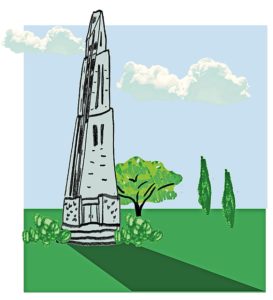
Millennium Carillon
Due in equal parts to its prominent location at the base of the Riverwalk’s Rotary Hill, its bold design, and its initial and ongoing costs, the 16-story Moser Tower has been something of a lightning rod of popular opinion since its opening in 2007. The 72-bell Millennium Carillon (the fourth-largest such instrument in North America) boasts commanding views of the surrounding area from its observation deck 253 steps up. Whatever one thinks of it, though, there’s no question that it has come to represent the symbolic heart of the city’s bustling downtown.
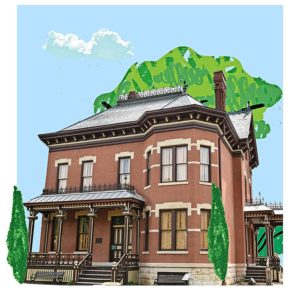
Naper Settlement
Established in 1969 and anchored by the renovated 12-room Martin Mitchell Mansion, this 13-acre outdoor history museum—documentation of the city’s rich past—serves a variety of purposes for the community: a popular field-trip destination and a convenient space for large-scale gatherings, such as outdoor concerts and art and culinary festivals.

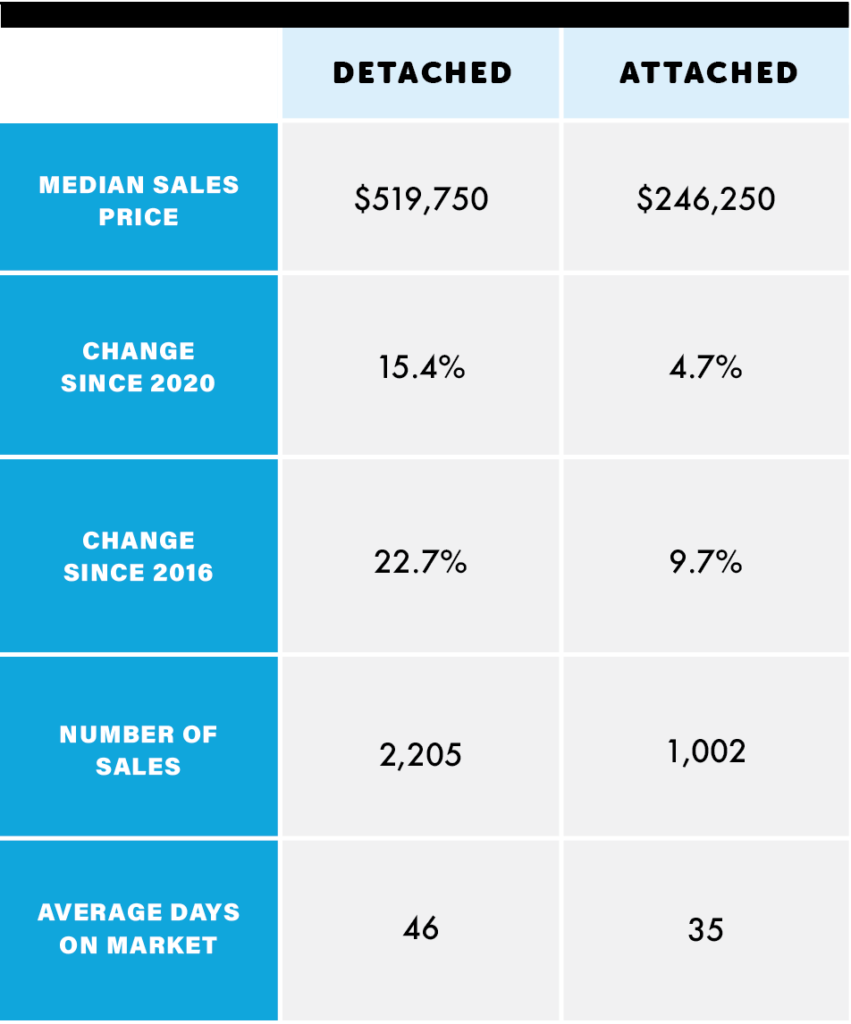
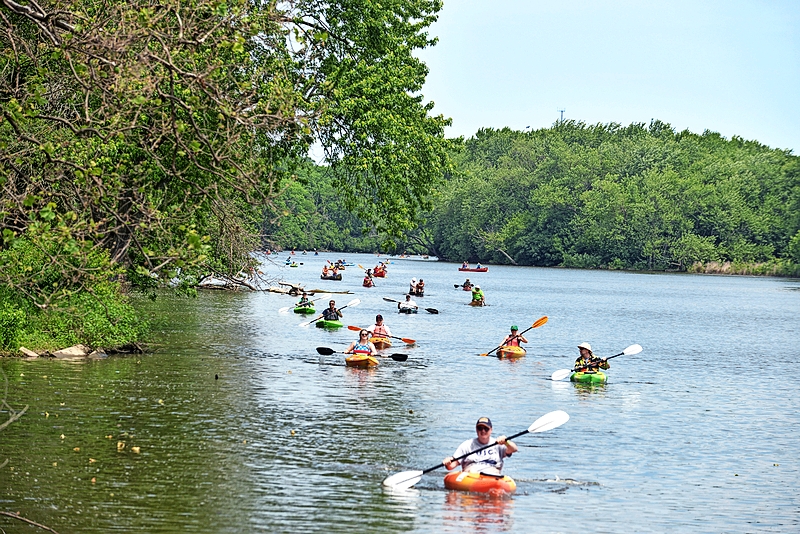
The Mid-American Canoe and Kayak Race and a historic building on LaSalle and Benton Streets
AURORA
Riverside views meet architectural and cultural diversity
Just the numbers associated with the “City of Lights” can be somewhat daunting. The second-largest city in Illinois boasts more than 200,000 residents and sprawls across six school districts, seven townships, and four counties. (Just its portion in DuPage would qualify as the second-largest city in the county.) But Linda Pilmer of Pilmer Real Estate, who has been working with buyers and sellers in Aurora since 1983, says those numbers don’t really tell the whole story.
“I like to call Aurora the ‘biggest little city’ because of how it’s comprised of so many great little neighborhoods,” she says. “The city has really managed its growth well.”
Size does have its advantages, of course. The mighty Fox River runs through a historic downtown that has been on the upswing for the past decade, featuring an enviable arts and entertainment scene that includes musicals at Paramount Theatre, live music at the Venue, and outdoor concerts at RiverEdge Park. The Aurora Park District also has an extensive system that includes the popular 325-acre Phillips Park, which claims a golf course, dog and skate areas, plus an aquatic center and zoo among its many attractions.
Better yet, Pilmer says, Aurora’s size lends itself to the kind of diverse architectural styles and culturally rich communities that truly help define a great place to live.
The city’s housing stock spans low end ($30,000) to high end ($1.075 million) and everything in between, but between limited availability and intense competitiveness, 2021 was a trying time for buyers, she says—a trend she expects to continue in 2022.
LOCAL LANDMARKS
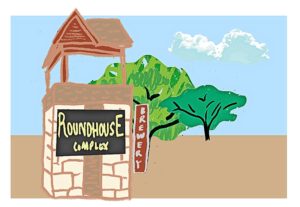
Two Brothers Roundhouse
This circa-1856 railroad and locomotive shop—the oldest limestone roundhouse in the U.S. and one of several Aurora entries on the National Register of Historic Places—sat empty for more than two decades before being renovated and repurposed as the Walter Payton Roundhouse in 1995. Since 2011, it has been owned and operated by local powerhouse Two Brothers Brewery.
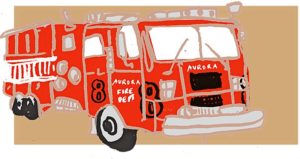
Aurora Regional Fire Museum
Under the familiar green dome on Broadway, the former central fire station for Aurora now houses a variety of educational firefighting exhibits—including historic and modern equipment, vintage films, and an interactive children’s discovery room—as well as community gathering spaces.


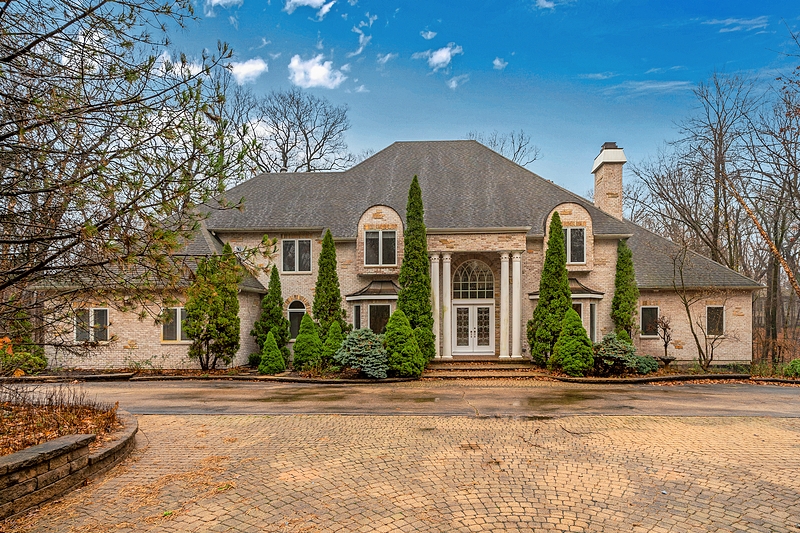
34W336 Country Club Road, $964,500
WAYNE
Wide open spaces tucked within suburban sprawl
With a population of just around 2,500 and very little commercial activity to speak of, Wayne holds fast to its roots as an equestrian-centered burg, spurning the widespread residential growth that has exploded all around it. Founded by horse folk, the town very much clings to that heritage, with most available properties boasting considerable acreage and features like stable facilities and trail access. Wayne has no public school system of its own, so its students feed into the South Elgin U46 district, but Baird & Warner agent Kelly Crowe says many families opt for private schooling.
After a solid 2021, Crowe believes the housing market in Wayne is set for another good year in 2022, albeit one with lower inventory and longer market times than most of its surrounding communities—largely due to its unique nature. Those who seek out Wayne, in other words, are generally doing so for a very specific segment of the family—specifically, those loved ones who get their shoes from the blacksmith.
“This was, and continues to be, a horse-focused community,” Crowe says. “People who come here know what they’re looking for: a small, quiet town with more of a rural feel.”
That was certainly what drew longtime resident Peter Connolly and his wife to Wayne almost 28 years ago. The retired commercial banker has served on the Village Board for 26 of those years, is active in the stewardship ministry of the Little Home Church by the Wayside, and in 2016 was honored with the village’s annual Citizen of the Year designation.
“We continue to enjoy and appreciate the historic, equestrian, and rural nature of Wayne and the commitment of the village and its residents to preserve this unique community surrounded by open space and forest preserves,” Connolly says.
LOCAL LANDMARKS
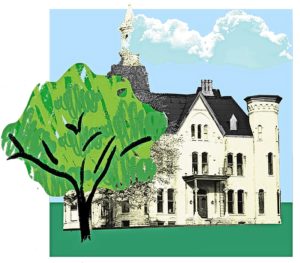
Dunham Castle
Dating back to the 1880s and built by early settler Mark Dunham (a breeder of Percheron horses), this French chateau-inspired estate has gone through several owners, renovations, and incarnations but remains the most recognizable structure in Wayne.
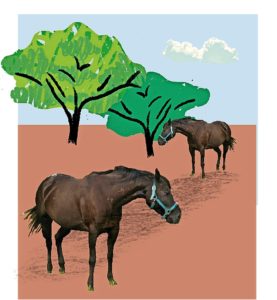
Dunham Woods Riding Club
Once home to the offices of pioneer Mark Dunham’s Percheron horse dynasty, this 1830s-era social, swimming, riding, and tennis club—featuring dining rooms and private event spaces plus a terrace and patio—continues to host a variety of member events and private parties today. Hunt rides with hounds are year-round activities for members, and the buildings on all four corners of Army Trail and Dunham Roads are included on the National Register of Historic Places. The Wayne Equestrian Center includes 50 stalls in two barns and a heated indoor riding arena.


Note: There were no attached single-family homes sold in Wayne over the past five years.
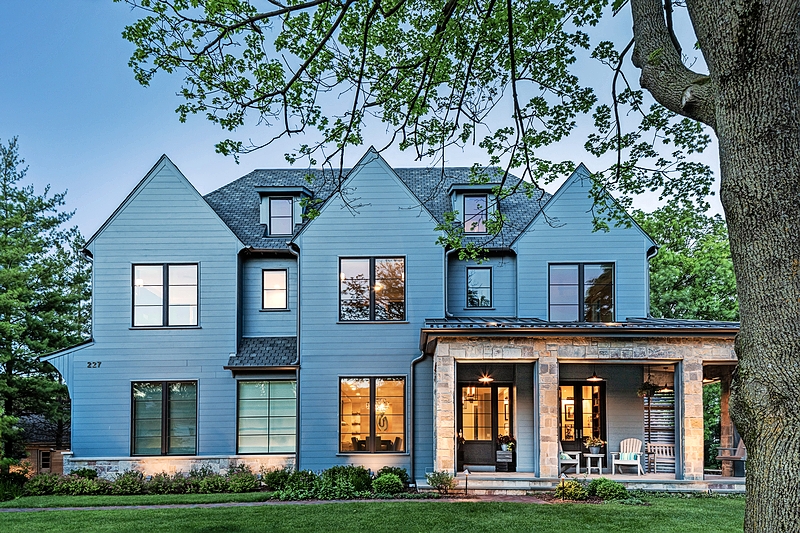
Both teardowns and historic homes dot Hinsdale’s residential areas, while upscale boutiques and restaurants fill its downtown.
HINSDALE
Upscale suburban charm in the heart of Chicagoland
With a median household income of just over $203,000, Hinsdale has certainly earned its reputation as
one of the bougiest suburbs in the Chicago area. And while home prices here haven’t necessarily kept pace with the upward trajectory of many neighboring towns, a nearly million-dollar median sales price for a detached single-family home in 2021 suggests that it’s not exactly time to start clipping coupons.
To run with this data and simplistically paint the west suburb with the broad brush of “uppity” really does a disservice to the many reasons why the village of Hinsdale became such a sought-after destination.
Situated just 20 miles from Chicago and served conveniently by a busy Metra line that runs right through the middle of its downtown area, Hinsdale definitely has the old real estate trifecta of location, location, location to build upon. But what really seems to entice people to dig deep for a home here has much more to do with the enduring charm of the community.
Relatively modest in both square footage and population, Hinsdale leans heavily on both history and exclusivity to compensate for the fact that its geographic limitations mean it won’t be growing anytime soon.
And that’s just fine by the village and most of its residents, who treasure the upscale lifestyle and small-town atmosphere that developmental ceiling has helped nurture.
As west suburban downtowns go, Hinsdale is often at or near the top of the list, dotted block by block with historic buildings (many of which make up the Downtown Hinsdale Historic District, a group of more than 70 designated structures) and buoyed by a collection of unique shops, boutiques, and restaurants that attract both townsfolk and outsiders alike.
The reverence for historic structures only goes so far, however, as the lack of new development in the village has, for many well-heeled homebuyers, meant tearing down what’s there and putting up what they want. Of course, the teardown trend is hardly unique to Hinsdale. It just tends to be a little more noticeable in a place with so much money flying around and only so many newer homes to satisfy the upscale tastes that tend to go along with those bankrolls.
But Hinsdale doesn’t take its teardowns lying down, having established the seven-member Historic Preservation Commission in 2002 to work with the Village Board to honor the residential and downtown architecture of the village and, in the process, to preserve its spirit and heritage. Among other projects, the commission is currently in the process of rewriting the Hinsdale zoning code as it pertains to historic preservation, establishing an overlay district to entitle owners of historically significant homes to various monetary and zoning relief incentives.
The idea is to encourage preservation of the town’s two National Register Historic Districts, and to stave off the wrecking ball in as many residential and commercial instances as possible.
“The teardown phenomenon has been raging in Hinsdale for over 20 years, so much so that Hinsdale is and has been on the list of endangered towns from Landmark Illinois for many, many years,” says John Bohnen, a Hinsdale resident for the past 47 years. Bohnen founded the real estate company County Line Properties 30 years ago and has served on the preservation commission for 13 years (including the last seven as chair).
“We are committed to try and reverse this trend where we can,” he says, “by incentivizing and assisting homeowners who might opt to preserve their family home rather than see it destroyed.”
LOCAL LANDMARKS
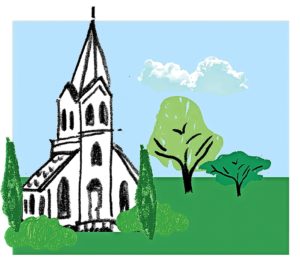
Immanuel Hall
Previously known as Immanuel Evangelical Church, this Gothic structure built in 1900 went through several owners (and a few threats of demolition) throughout the 20th century before being added to the National Register of Historical Places in 2001. Restored in 2008, it is now used for public events.

Hinsdale Memorial Building
Originally conceived as World War I tribute in 1927, this impressive colonial revival structure (based on the design of Philadelphia’s Independence Hall by Chicago architect Edwin H. Clarke) also honors soldiers killed in World War II and the Korean and Vietnam Wars. Part of the expansive Hinsdale Historic District, the building houses village offices and the public library and has gone through a number of renovations over the decades, including the 1989 addition in which the library is currently housed.

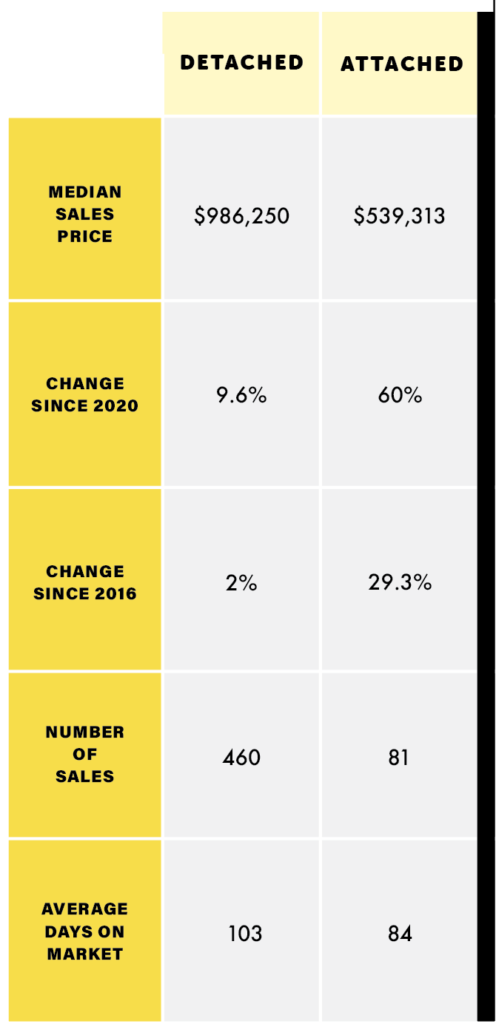
Photos courtesy GETTY IMAGES, RiverEdge Park, Aurora Park District, Century Walk, Naper Settlement, City of Hinsdale, Marcus, Burr Ridge Veterans Memorial, and by Emilia Czader, Keller Williams Realty, Erin Konrath/Pineapple Labs, Marina Storm/Picture Perfect House and North Central College and Century Walk, Aurora Park District, Wayne, Emilia Czader and AimÉe Mazzenga, Marcus and the Village of Hinsdale

